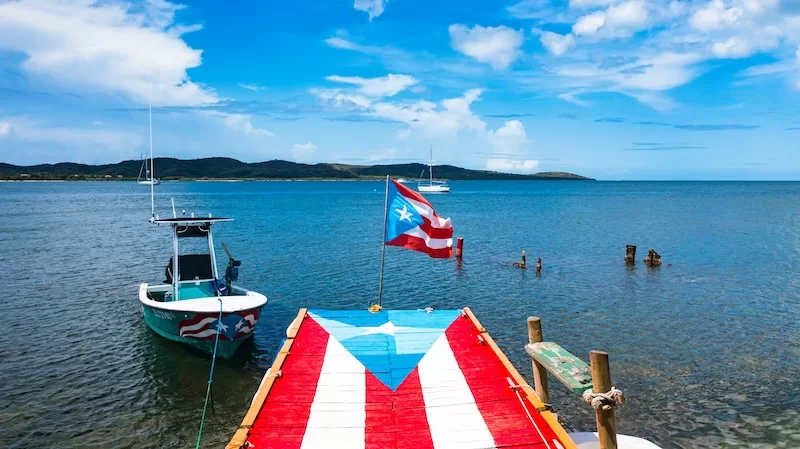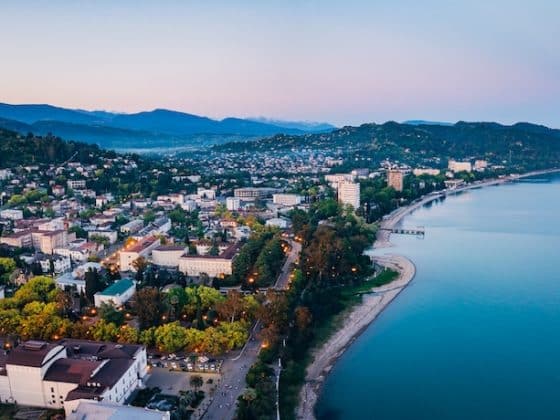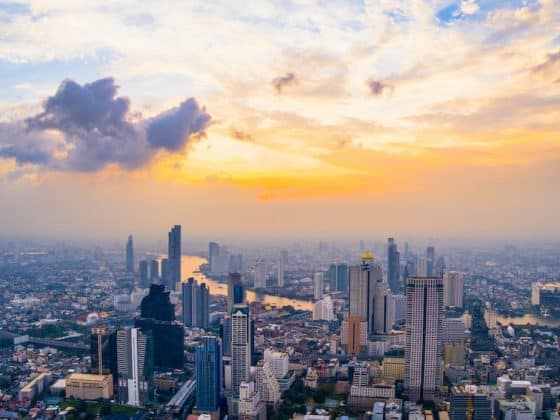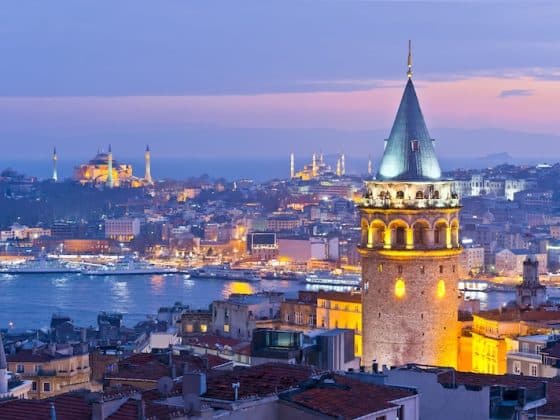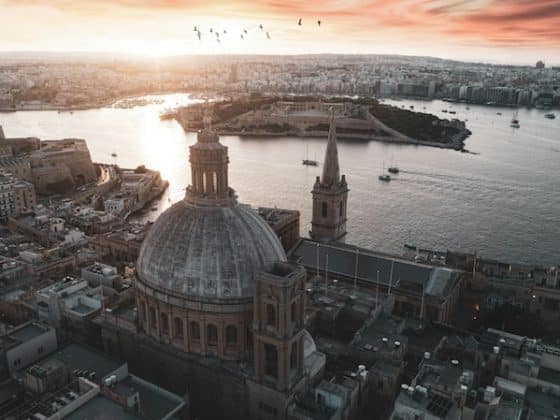Introduction
There’s a moment, early in any stay in Puerto Rico, when the island’s routine starts to rewire your own. You notice it standing in line at a bakery that opens when it opens, or watching the sky flash gold after a storm that stopped traffic an hour earlier. It’s life on its own clock: slower, mellower, but still pulsing with energy.
For newcomers, it can be both thrilling and disorienting. Here, U.S. law and local logic meet in curious harmony. Bureaucracy takes patience. Neighbors take care of each other. And the same hand that built the highways also painted the murals that turn entire streets into color.
Living in Puerto Rico means learning to navigate that duality: the comfort of mainland familiarity and the raw, unpredictable beauty of the island’s day-to-day reality. This isn’t a story of escape, but of adaptation. And if approached with curiosity, it can become one of the most rewarding moves you’ll ever make.
This article aims to help you assess the full picture, ground your expectations, and prepare for a move that blends practical moves with emotional readiness.
Why Choose Living in Puerto Rico
The U.S.-territory advantage
For many, the appeal of living in Puerto Rico begins with its rare balance of familiarity and freedom. As a U.S. territory, it offers the simplicity of staying within the same federal framework: no visa, no currency exchange, no need to sever ties with systems already known. The U.S. dollar still lines wallets, postal addresses work the same, and healthcare, banking, and legal processes follow familiar patterns, but the island feels distinctly apart. For those seeking freedom without the bureaucratic labyrinth of moving overseas, Puerto Rico is an in-between space: part mainland order, part tropical improvisation.
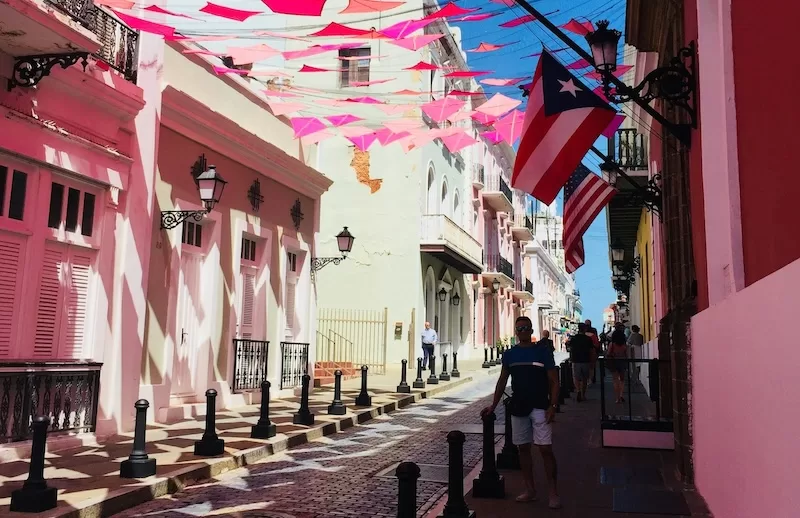
Climate, geography and pace of life
Few places pack this much variety into such a small stretch of land. One weekend can mean paddling through bioluminescent waters in Vieques, the next hiking in misty mountain forests above Jayuya. The climate is tropical but forgiving: warm, humid, steady, punctuated by bursts of rain that give way to luminous sunsets. Days are punctuated by fruit stands along the roadside, spontaneous swims in the ocean, neighbors who wave from balconies, conversations that stretch longer than planned.
Puerto Rico also asks for adaptability. Power flickers. Bureaucracy slows. Roads twist before they reach the coast. But for many, that friction is part of the territory’s charm, because perfection isn’t the point here. Instead, it’s about a lifestyle that trades convenience for connection, predictability for color, and constant speed for a mellower pace.
The decision to make Puerto Rico home is as much about choosing a living experience as it is a location. It attracts remote workers chasing year-round sun, retirees craving warmth and community, creatives drawn to an island alive with music and art, and families wanting the space to live closer to nature without leaving U.S. soil. It’s an invitation to recalibrate, to live simply, vividly, and just a little off-script.
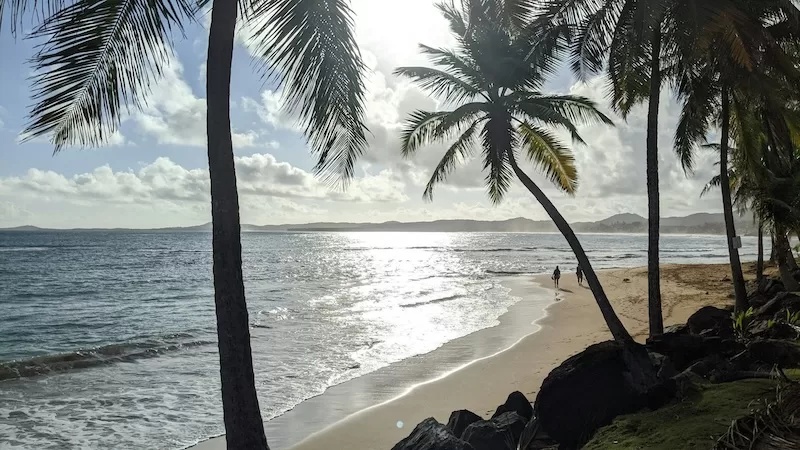
Broader motives to live in Puerto Rico
Beyond its landscapes and practical ease, living in Puerto Rico appeals to deeper instincts, to the desire to simplify, to belong, to start again somewhere slower but still connected.
- Financial and lifestyle advantages: For some, Puerto Rico’s tax incentives (Acts 60 and 20/22) make it a smart base for entrepreneurs, investors, and remote professionals. It’s one of the few places where you can run a U.S.-linked business and enjoy tropical living with lower taxes and operating costs.
- Investment opportunities and tax synergy: Beyond Act 60, Puerto Rico offers an unusually wide canvas for investors. Nearly 95 percent of the island is designated as a U.S. Opportunity Zone, part of a federal program that encourages investment in local development by deferring and reducing capital-gains. The overlap between these federal incentives and the island’s own tax benefits creates one of the most powerful investment ecosystems in the United States. For entrepreneurs, real-estate developers, and impact investors, Puerto Rico stands out as a place where capital and community growth can align.
Read More Like This: Opportunity Zones: Invest in Puerto Rico
- Creative freedom and community: Artists, writers, and filmmakers are drawn by the territory’s texture, its music, light, and layered history. The creative scene is collaborative, grassroots, and full of movement.
- Family and quality of life: Families often cite the relaxed lifestyle, year-round outdoor play, and bilingual education as defining benefits. Children grow up surrounded by sea and greenery rather than screens and traffic.
- Cultural richness: Puerto Rico’s identity blends Taíno roots, African rhythms, and Spanish architecture with American influence. The result is a cultural landscape that feels both deeply local and globally aware.
- Health and well-being: Many who relocate speak of lower stress, more time outdoors, and a natural shift toward balance. Daily life unfolds closer to sunrise and sunset, and the ocean is never far.
Cost of Living and Housing
Puerto Rico’s economic contrast with the mainland is clear in the numbers. The island’s median household income stands at $25,621, compared to $74,580 in the continental United States. That gap shapes how locals budget and how far newcomers’ income can stretch. Remote earners and retirees often find that dollars earned elsewhere buy a higher quality of life here, provided expectations are adjusted to Puerto Rico’s reality.
Major cost categories (rent, utilities, groceries)
When weighing living in Puerto Rico, cost fact-checks matter. For a single person excluding rent, monthly living costs have been estimated at around $1,100 in 2025, while a family of four might require $3,500–$4,000 depending on lifestyle and location. More broadly the cost of living in Puerto Rico is roughly 14.8 % lower for housing, 20 % lower for transportation, but interestingly groceries may run slightly higher (about 4.4 %) compared to the U.S. average.
- Housing: Rents vary widely. A one-bedroom apartment in San Juan averages about $1,100 per month, while similar units outside the capital can drop below $800.
- Utilities: Electricity remains high by U.S. standards, with rates around $0.28–$0.30 per kWh. Expect monthly bills of roughly $175–$225 depending on usage.
- Groceries and dining: Local produce is affordable, but imported goods can cost 10–20% more than on the mainland. Eating out, however, can balance things: lunch plates for $8–$12 are common.
Housing market trends and rentals
Real estate in Puerto Rico is diverse: modern condos in Condado, pastel walk-ups in Old San Juan, hillside homes in Rincón. Demand has surged in recent years as investors and remote workers arrived, particularly in coastal areas. A three-bedroom apartment in central San Juan rents for about $2,400 per month, while properties in smaller towns can be found from $500–$900.
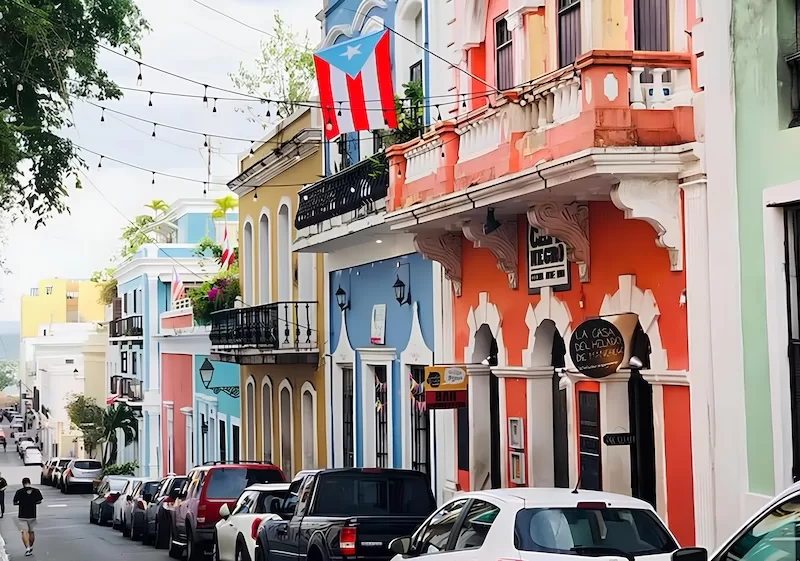
On the purchase side, median home prices vary drastically by region, with luxury markets climbing sharply. If you are planning to buy, we recommend you research carefully and connect with a local agent familiar with property taxes, which differ from state-to-state systems.
Practical Relocation Considerations
Puerto Rico is home to roughly 3.29 million residents, concentrated mainly around San Juan and coastal municipalities. Population density averages about 960 people per square mile, giving cities a compact feel while inland towns remain quiet and spacious. The combination allows newcomers to choose between a lively urban vibe and rural calm within an hour’s drive.
Language, culture and community fit
Although English is an official language in Puerto Rico, Spanish remains dominant in many daily settings. While many locals are bilingual, learning some Spanish builds connection: it opens doors to friendships, smoother transactions, and a more genuine understanding of island life. Communities are close-knit, and reputation travels fast, so patience and warmth go a long way. Some expats note that bureaucracy or structural inefficiencies can feel more pronounced than on the U.S. mainland.
Healthcare, infrastructure and local services
Healthcare is under both local and federal systems. Facilities in major cities like San Juan are modern and well-staffed, while rural areas can feel underserved. Infrastructure continues to be rebuilt after past hurricanes; occasional power outages or road closures are part of life. Most expats adapt with generators, water storage, and flexible expectations.
Taxation, legal status and residency
For U.S. citizens, relocating to Puerto Rico is straightforward: no passport, customs line, or work permit required. But taxation is a world of its own. Acts 60/20/22 offer potential tax advantages for qualifying individuals and businesses who establish bona fide residency on the territory. Compliance, however, is key. Residents must spend a minimum number of days on the island and meet clear physical presence and local income criteria. Working with a Puerto Rico-based tax professional is essential before making any financial move.
Lifestyle & Day-to-Day Realities
Work, remote income and local employment
Remote work fits Puerto Rico like sunlight fits its coastline. Cafés double as offices, and co-working hubs in San Juan, Dorado, and Rincón bring together digital nomads, freelancers, and start-up founders who came for a season and never left. High-speed internet in urban and coastal zones of Puerto Rico is increasingly reliable, with recent reports showing average download speeds in the 70-150 Mbps range, though rural areas can lag after storms. Local wages run below mainland averages and the seasonally-adjusted unemployment rate as of mid-2025 is about 5.5 %, which is why many residents blend income streams: remote contracts, small businesses, short-term rentals, or creative projects. The entrepreneurial energy is palpable, a hybrid model that fits Puerto Rico’s flexible economy. You meet web designers who also sell handmade jewelry at weekend markets, or retirees who turned beachside apartments into boutique rentals. Puerto Rico rewards independence and flexibility more than rigid career ladders.
Housing, banking, and daily logistics
Rental contracts typically run yearly, though short-term furnished options exist in coastal zones. Expect to pay one month’s rent plus deposit upfront. Utility hookups (water, electricity, internet) are separate and may require proof of residence or deposits if you don’t yet have a local credit history.
Banking feels familiar but has quirks. Major U.S. banks operate on the island, though smaller transactions and services sometimes take longer than you may be used to. Online transfers between mainland accounts are seamless, but in-person services lean toward a slower, more personal style. Cash remains common for local markets and small businesses.
Living in Puerto Rico is a sensory experience. Music drifts from balconies at dusk, plazas pulse with dance long after midnight, and even the smallest towns celebrate something most weekends. There’s a festival for everything: seafood in Hatillo, coffee in Maricao, pineapples in La Parguera, and parades that turn whole streets into living color.
Food is a daily love language. Plantains, beans, rice, pork, simple ingredients turned into comfort. You’ll find upscale restaurants in Condado, but some of the best meals come from roadside kiosks serving empanadillas straight from the fryer. Meals are long, social, and often spontaneous: a quick lunch easily becomes an afternoon gathering.

Getting around and daily conveniences
A car is almost essential outside the metropolitan zone. Public buses exist but run irregularly, and Uber coverage fades beyond the city. Roads are mostly good, though rural routes can twist unpredictably. Most errands cluster around shopping plazas. Grocery stores, pharmacies, and cafés often share the same complex, and Sunday shopping is practically a ritual.
Healthcare, education, and well-being
Modern hospitals and clinics are concentrated in cities like San Juan, Ponce, and Mayagüez, while smaller communities rely on local clinics and traveling specialists. Pharmacies are easy to find and often double as social hubs. You’ll hear greetings, jokes, and long conversations while people wait for prescriptions.
Education follows the U.S. system, with both public and private schools available. Many private institutions offer bilingual programs, and homeschool communities are growing among expat families.
Overall, well-being here is less about wellness trends and more about presence. People take time for family, for food, for conversation. Mental health seems to more achievable under bluer, slower skies.
Safety, weather, and preparedness
Puerto Rico is generally safe, though like anywhere, petty theft can occur in tourist-heavy areas. Locals rely on community vigilance: neighbors who look out for each other more than formal neighborhood watches.
Hurricane season runs from June to November, and locals take it seriously. Since 2017, Puerto Rico, with the support of international organizations such as FEMA, has invested heavily in rebuilding critical infrastructure. Those long-term projects (from modernized power grids to reinforced schools) continue to strengthen community resilience.

Homes are built for tropical weather, and emergency routines are second nature. Having storm shutters, backup power, and stored water is part of responsible living rather than alarm. The community response in times of crisis is strong; resilience is an unspoken part of the culture.
Pros and Cons of Living in Puerto Rico
The Upside
The first thing that strikes most newcomers isn’t how different Puerto Rico feels, but how alive it is. The light hits differently. Everyday life happens mostly outside, at the beach, at the bakery, in the plazas, on shaded verandas. For many, that alone is worth the move.
From a financial standpoint, living in Puerto Rico can stretch your dollar further than in many U.S. cities. Rent outside the capital remains accessible, local produce is inexpensive, and the general cost of living is gentler than the mainland average. You learn that abundance doesn’t mean excess. It means fresh mangoes in season, daily ocean swims, and space to breathe without counting hours on a clock.
Being a U.S. territory also takes the friction out of relocation. You can keep your Social Security, open a bank account, and file taxes within a system you already understand. No visa, no currency exchange, no international barriers. For Americans, it’s an overseas experience with the safety net of home still quietly in place.
But what makes living in Puerto Rico truly magnetic goes beyond logistics. It’s the cultural pulse. Festivals spill into streets without needing an occasion, and the soundscape (coquí frogs, church bells, salsa, and waves) becomes the background score to your every day. Food carries stories of migration and memory: crispy tostones, pernil slow-cooked until tender, coffee that tastes like sunlight and soil.
Geographically, Puerto Rico is a condensed version of the Caribbean dream. Within a few hours you can drive from misty mountains to mangrove lagoons, from old Spanish forts to surf-washed beaches. The territory’s size encourages exploration: nothing is far, and weekend escapes are woven into local routine. And through it all, the climate stays steady, a warm 80°F most days of the year, which means outdoor living isn’t a season but a lifestyle.
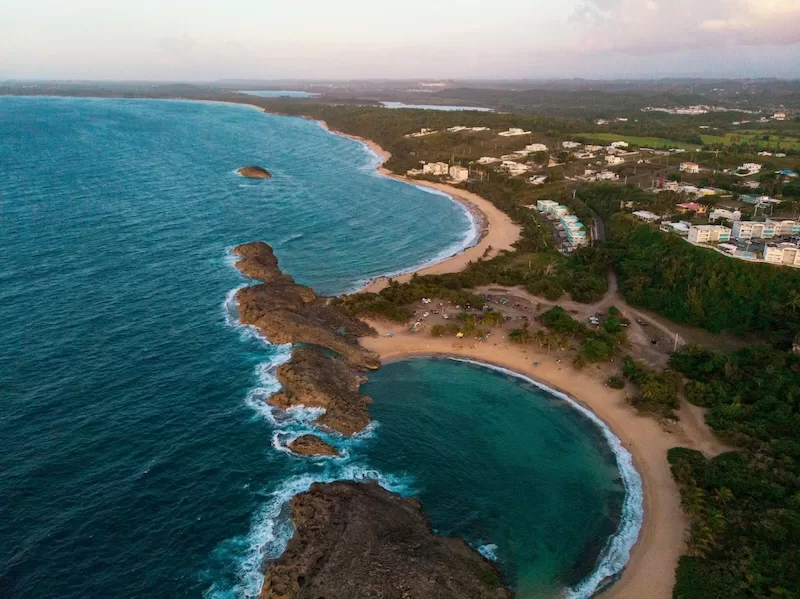
The Challenges
Still, paradise asks for patience. Infrastructure can falter, sometimes abruptly. Power outages are part of the rhythm, not an exception. The electrical grid remains fragile, roads erode under tropical storms, and public transport outside the metro area is limited. Those used to clockwork efficiency need to adapt to generator hums, to water tanks, to the art of shrugging and carrying on.
The housing market has also changed rapidly. In recent years, tax incentives and remote-work migration have sent property prices soaring in many coastal zones. San Juan, Dorado, and Rincón have seen double-digit increases in both rent and sale values, pricing out many locals and tightening availability. While small-town interiors still offer affordability, finding long-term housing now takes persistence, timing, and local connections.
Work opportunities can be another constraint. Puerto Rico’s local economy pays less than most U.S. states, with a median household income of about $24,000 compared to $74,000 on the mainland (U.S. Census Bureau, 2024). Skilled professionals, entrepreneurs, and remote workers who earn mainland or international income find the balance favorable, but those relying solely on local wages may find budgets tight.
There are bureaucratic quirks too. Government offices keep their very unique stride, and paperwork often moves more by relationship than by system.
The weather itself can be an ordeal. The same tropical warmth that draws people in also brings hurricane season each year. From June through November, residents prepare with stocked pantries, shutters, and flexible plans.
Nevertheless, for many, these challenges don’t overshadow the rewards. Puerto Rico teaches resilience in small daily ways: through candlelit dinners during power cuts, through communities that look out for each other when the wind picks up. It asks you to slow down, pay attention, and live with both feet on the ground.
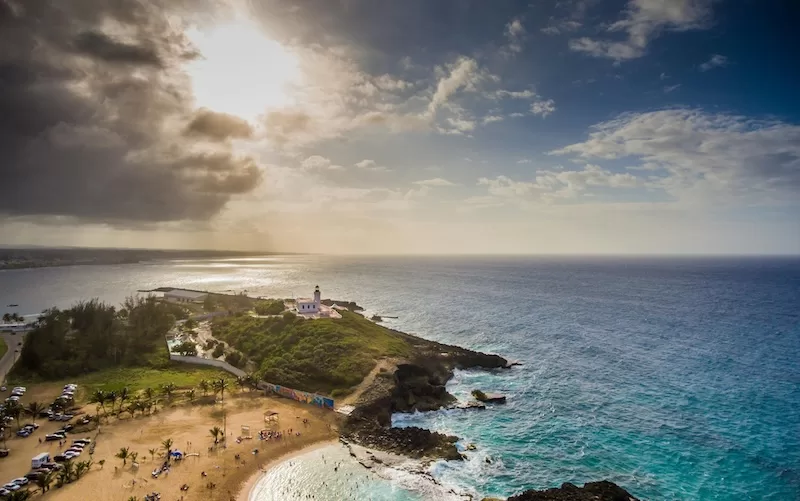
FAQs
Q1. Do U.S. citizens need a visa to live in Puerto Rico?
No. Puerto Rico is a U.S. territory, so U.S. citizens can move, work, or retire here freely. There’s no customs line, no visa paperwork, and no need to exchange currency. It’s one of the few tropical destinations where you can relocate with just a plane ticket and a plan.
Q2. Is the cost of living in Puerto Rico lower than the U.S. mainland?
In many ways, yes. Housing and transportation are generally more affordable, and you can eat well without spending much. But imported products (from cars to certain groceries) tend to cost more, and electricity bills are higher than average. How far your dollar stretches depends largely on where and how you live. Simplicity here is often the key to comfort.
Q3. What language is spoken on the island?
Both Spanish and English are official languages, but Spanish carries daily life. In the metro area, English is widely understood; outside it, even a little Spanish goes a long way. Locals appreciate the effort, and learning a few phrases opens doors to better service, warmer friendships, and a deeper sense of belonging.
Q4. Are there special tax incentives for relocating to Puerto Rico?
Yes. Acts 60 (previously Acts 20 and 22) offer tax advantages for certain residents, entrepreneurs, and investors who meet local residency requirements. These programs can significantly reduce corporate and personal tax obligations, but they come with detailed compliance rules. Professional advice is essential before you count on the savings.
Read More Like This: Puerto Rico’s Act 20
Q5. Is infrastructure reliable?
It works most of the time. Power outages happen, the grid needs modernization, and service repairs can take longer than expected. Most residents adapt with generators, solar panels, and a sense of humor. In cities, services like healthcare, internet, and mobile coverage are strong; rural areas can feel less predictable but often make up for it in peace and space.
Q6. What’s healthcare like in Puerto Rico?
Healthcare is solid in larger towns and cities, with hospitals and clinics that meet U.S. standards. Many doctors train stateside and speak fluent English. Rural healthcare, though, can be limited, so those with chronic conditions often settle near major medical centers in San Juan, Ponce, or Mayagüez.
Q7. Can I bring my car or buy one locally?
You can bring your own car, but shipping costs can reach $1,000–$2,000 depending on the carrier. Buying locally is often easier, though vehicle prices run higher due to import taxes. Roads are well-developed in urban areas but narrow and winding inland, so compact cars and SUVs are common.
Q8. How safe is it to live in Puerto Rico?
Safety varies by neighborhood, just like anywhere. Tourist zones and residential communities are generally safe, especially in daylight. Petty theft happens in crowded spots, so a bit of street sense goes a long way. The island’s strong community culture and visible local pride create a reassuring sense of belonging once you settle in.
Q9. What about hurricane season?
Hurricane season runs from June through November. Residents prepare early by stocking essentials, securing property, and keeping backup power sources ready. Most modern homes are built to withstand tropical storms, and the emergency response systems are practiced and community-driven. It’s less about fear and more about readiness.
Finding Home in the Space Between
Living in Puerto Rico is an act of trade-off, comfort gives way to curiosity, and structure softens into spontaneity. Days stretch longer, shaped by the ocean’s pull and the slow drift of island time. It’s a place that rewards patience, curiosity, and a willingness to adapt. The sunlight feels endless, the air heavy with salt and music, and time bends toward something slower.
For anyone ready to explore that balance of U.S. comfort and Caribbean soul, Puerto Rico is waiting.
To dive deeper into the best countries for expats, real life tips, cost-of-living comparisons, relocation logistics, residency updates, or tax incentives, subscribe to our newsletter, your guide to turning global living from dream to reality.
